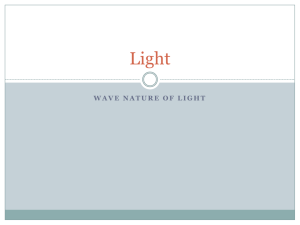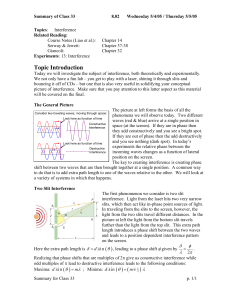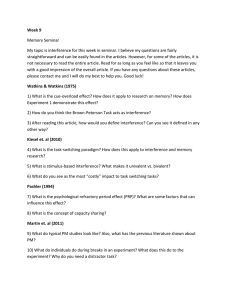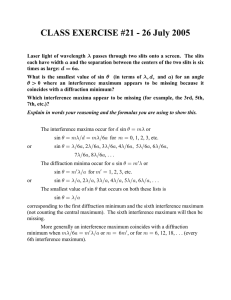Topic Introduction
advertisement
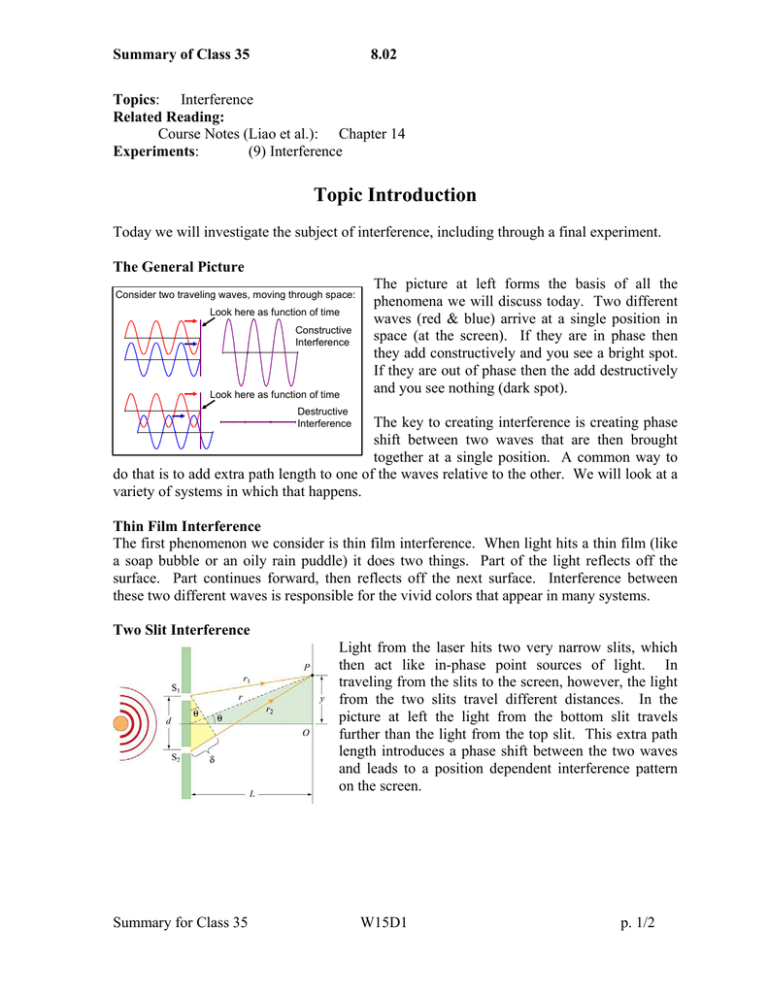
Summary of Class 35 8.02 Topics: Interference Related Reading: Course Notes (Liao et al.): Chapter 14 Experiments: (9) Interference Topic Introduction Today we will investigate the subject of interference, including through a final experiment. The General Picture Consider two traveling waves, moving through space: Look here as function of time Constructive Interference Look here as function of time The picture at left forms the basis of all the phenomena we will discuss today. Two different waves (red & blue) arrive at a single position in space (at the screen). If they are in phase then they add constructively and you see a bright spot. If they are out of phase then the add destructively and you see nothing (dark spot). Destructive Interference The key to creating interference is creating phase shift between two waves that are then brought together at a single position. A common way to do that is to add extra path length to one of the waves relative to the other. We will look at a variety of systems in which that happens. Thin Film Interference The first phenomenon we consider is thin film interference. When light hits a thin film (like a soap bubble or an oily rain puddle) it does two things. Part of the light reflects off the surface. Part continues forward, then reflects off the next surface. Interference between these two different waves is responsible for the vivid colors that appear in many systems. Two Slit Interference Light from the laser hits two very narrow slits, which then act like in-phase point sources of light. In traveling from the slits to the screen, however, the light from the two slits travel different distances. In the picture at left the light from the bottom slit travels further than the light from the top slit. This extra path length introduces a phase shift between the two waves and leads to a position dependent interference pattern on the screen. Summary for Class 35 W15D1 p. 1/2 Summary of Class 35 8.02 δ φ . = λ 2π Realizing that phase shifts that are multiples of 2π give us constructive interference while odd multiples of π lead to destructive interference leads to the following conditions: Maxima: d sin ( θ ) = mλ ; Minima: d sin ( θ ) = ( m + 12 ) λ Here the extra path length is δ = d sin ( θ ) , leading to a phase shift φ given by Diffraction The next kind of interference we consider is light going through a single slit, interfering with itself. This is called diffraction, and arises from the finite width of the slit (a in the picture at left). The resultant effect is not nearly as easy to derive as that from two-slit interference (which, as you can see from above, is straight-forward). The result for the anglular locations of the minima is a sin ( θ ) = mλ . Important Equations Two Slit Maxima: ⎧ m constructive φ =⎨ : λ 2π ⎩ m + 12 destructive d sin ( θ ) = mλ Single Slit (Diffraction) Minima: a sin ( θ ) = mλ Interference Conditions ∆L = Experiment 9: Interference Preparation: Read pre-lab and answer pre-lab questions The lab investigates interference of laser light going through slits, diffracting off of hair and reflecting off of a CD. Summary for Class 35 W15D1 p. 2/2




